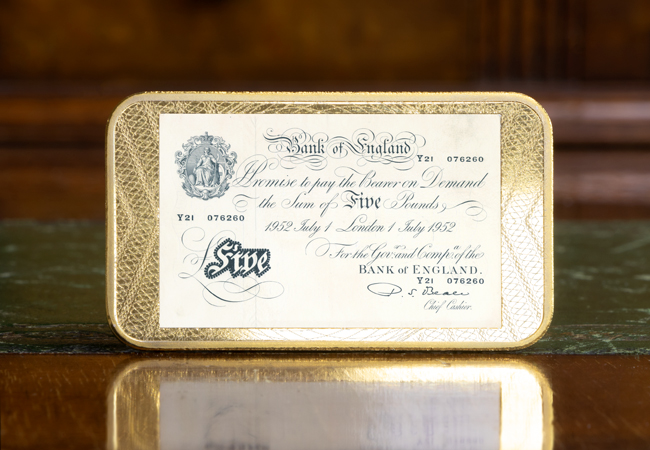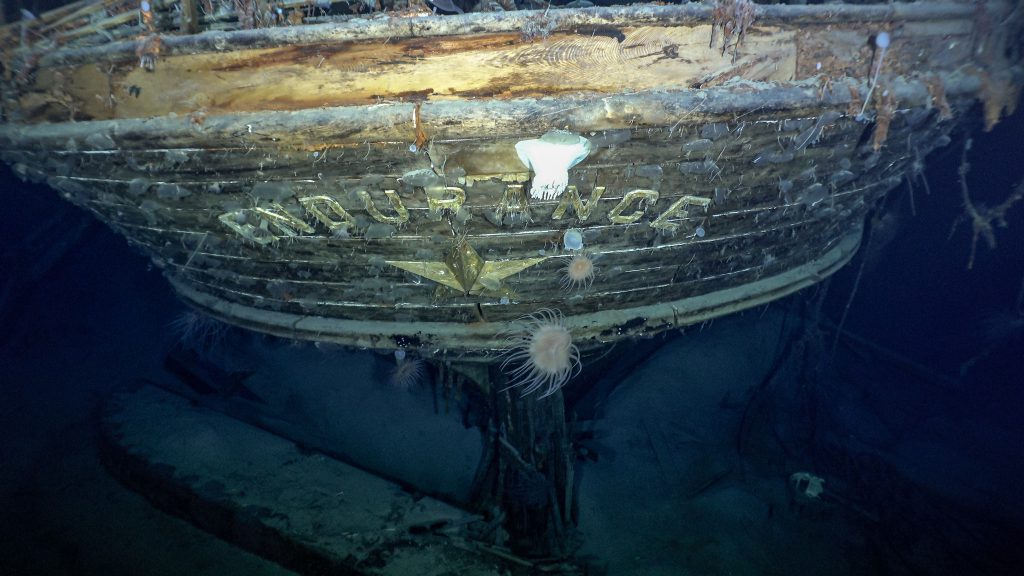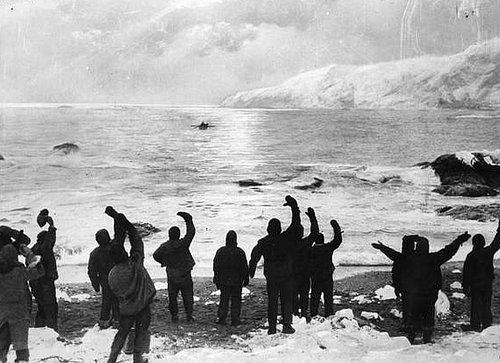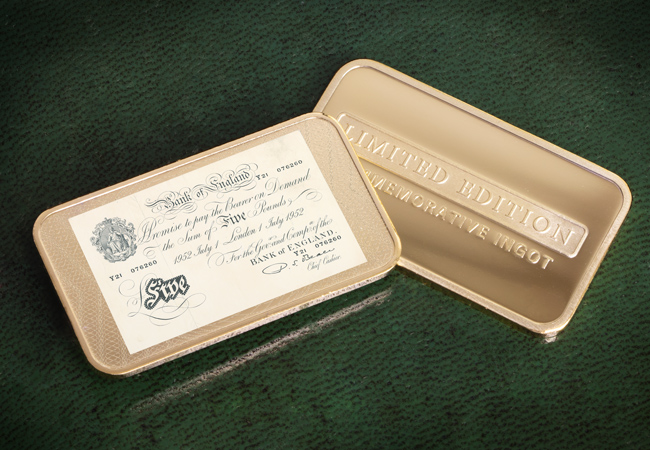Posts Tagged ‘British history’
Was this the most famous Banknote ever issued?
First issued by the Bank of England in 1694, Banknotes were originally supposed to be used as a receipt in exchange for gold loans to the bank. Owners of Banknotes could literally take their note to the Bank of England and exchange it for the equivalent price in gold.
In fact, all British notes still have the statement “I promise to pay the bearer on demand the sum of…” to this day.

Britain stopped using the gold standard in 1931, meaning that the right to redeem Banknotes for gold ceased. And by 1945, a metal thread had to be introduced on the £5 note following a security threat from Nazi Germany.
In this blog, we’ll explore the history of the ‘White Fiver’, why an estimated 70,000,000 of these ‘notes’ were burned and the story of one of wartime’s most over-the-top secret plots…
The Story Behind The ‘White Fiver’
The £5 note was only ever intended as a temporary measure, William Pitt, the Prime Minister at the time originally planned to take the £5 out of circulation once economic conditions improved. However, the £5 note has since become the longest serving denomination and at one point was even the highest denomination Bank of England note.
Active between 1793 and 1945, the Bank of England’s White Paper £5 note was the second variant of the denomination and became known as the ‘White Fiver‘. Much bigger than today’s equivalent (which stands at 135 x 70mm), the original paper notes were a huge 195 x 120mm.
But production of these notes was halted during World War II and a new metal thread security feature was introduced to combat counterfeiting attempts from Nazi Germany.

Operation Bernhard
The largest counterfeiting operation in history, Operation Bernhard was the codename of a secret Nazi plot to destabilise the British economy. The Nazis planned to drop counterfeit notes throughout Europe to cause artificial inflation of the British pound.
In 1942, production of counterfeit British ‘White Fivers’ began behind the gates of Sachsenhausen concentration camp. Prisoners worked to perfect the process, revealing over 150 secret security marks, creating identical ink, solving the serial numbering system and printing the notes. By 1945 it is estimated that 70,000,000 notes were printed by inmates – a cache of upwards of £100,000,000.
The plot never came to fruition and at the end of the war Nazis burned huge amounts of British “currency”. But the Bank of England didn’t take any chances and withdrew all circulating notes.
Unsurprisingly Operation Bernhard, as it was known, is remembered as one of wartime’s most over-the-top secret plots.
And that’s why, over 60 years since it was legal tender, the ‘White Fiver’ remains the most famous banknote ever issued…
Your Limited Edition Collecting Opportunity
Today you can own the White Fiver Gold-plated Ingot for FREE (+p&p) when you trial the History of Banknotes Collection.
Your White Fiver Ingot is plated in 24 Carat Gold and struck to a Proof-like finish, framing the famous black and white design superbly.
Just 9,950 of these White Fiver Gold-plated Ingots have been issued for collectors worldwide, a tiny number given the important part the White Fiver has played in British history.
And what’s more, you will gain exclusive access to the History of Banknotes Ingot Collection.
Introductory Offer
The White Fiver is an Introductory Offer for the History of Banknotes Ingot Collection. Each month, you’ll receive two Gold-plated Banknote Ingots for £25.00 (+p&p). Next month, you’ll also receive your FREE Presentation Case to house your collection. You can cancel your subscription at anytime. Click here to secure yours >>
HMS Endurance discovered: Sir Ernest Shackleton’s lost ship found in Antarctic
You might have already seen the news that the HMS Endurance has been discovered more than 3,000 metres below the Antarctic Ocean.
It’s a fascinating discovery – in fact, the team that discovered the lost ship said that it’s ‘by far the finest wooden shipwreck’ they’ve ever seen.

If you don’t know why this story has captured everybody’s imagination, I’m going to explain to you why Sir Ernest Shackleton’s expedition on his ship HMS Endurance is one of the most enthralling stories in British maritime history…
The story of Endurance…
Sir Ernest Shackleton’s expeditions to the Antarctic captured my imagination as a young man, and even inspired the likes of Sir Edmund Hillary.
His most famous voyage was on the HMS Endurance – the very ship that’s discovery was announced this week. It’s this journey that produced one of the greatest stories of heroism in British exploration history.
Shackleton’s attempt to complete a Trans-Antarctic voyage left him and his crew stranded on the ice for 6 months with no prospect of rescue after the Endurance was crushed and sank in the place where it’s since remained for more than a century.
With the pack ice breaking apart underneath their feet, Shackleton and the crew of the Endurance had to make a decision and fast.

Using three small fishing boats the crew sailed 800 miles through the treacherous Southern Ocean, battling against hurricane force winds and icy water to cross South Georgia’s uncharted glaciers.
During this tortuous journey, Shackleton’s main concern was for his men. At one point, Shackleton handed over his precious mittens to a member of the crew who lost his at sea, suffering frostbite as a result.
When rescue finally arrived, the crew of the Endurance returned home to find that the First World War had broken out in their absence.
Shackleton’s immense journey, his bravery, and his endurance firmly secured him a place amongst Britain’s greatest.
The Discovery of the Endurance
Now, more than 100 years since it was last seen, the HMS Endurance has finally been discovered!
Dr John Shears, the expedition leader of Endurance22, said the search for Endurance had made “polar history” by completing what he called “the world’s most challenging shipwreck search”.
In memory of the famous explorer and his ship the HMS Endurance, you have the chance to own a collection of coins that celebrate the famous explorer.
View our range of Sir Ernest Shackleton commemorative coins here >>
Britain through the reign of Her Majesty Queen Elizabeth II: Part 4

The Land of Hope and Glory Collection tells the story of Britain through the reign of Her Majesty Queen Elizabeth II.
In the final instalment of the series, we will revisit some of the important events that have happened during Her Majesty’s reign in the past three decades.
Fire at Windsor Castle
On the 20th November, 1992 a terrible fire took place at Windsor Castle, the magnificent building Her Majesty the Queen calls home for most of her private weekends and one month a year over Easter.
Maintenance work was being carried out in the Castle at the time when a faulty spotlight overheated leading to it igniting. A nearby curtain took hold of the heat, lighting up in flames.
The fire spread dramatically.
Luckily, due to the work being carried out, much of the furniture which would have been near when the fire started, had already been removed to create space. This meant that a lot of possessions that would have been completely destroyed, were safely tucked away somewhere else.
Those working in the Castle, along with soldiers and members of the Royal family, all formed a human chain to pass items along out of the building. As such this meant that 300 clocks, historic manuscripts, thousands of valuable books, a forty-six-meter-long table, thirty-seven-meter-long carpet, and a collection of miniatures were all rescued.
Help quickly arrived and all together 1.5 million gallons (6,750 tons) of water from the mains water supply, a reservoir fire hydrant, a swimming pool, a pond, and the nearby River Thames were used to stop the fire.
After five years the Castle was returned to its former glory and remains open to the public throughout the year — continuing its 900 years of history today.
To find out more details of booking a visit to the Castle, click here >>
Channel Tunnel Opens
The American Society of Civil Engineers described this as one of the “seven wonders of the world” in 1996. Connecting Britain and the European mainland for the first time ever since the Ice Age, The Channel Tunnel reduced travel time between England and France to a mere thirty-five minutes. At the height of its construction fifteen thousand people were employed and eleven boring machines used. One boring machine is as long as two two football pitches, and all eleven together weighed an enormous twelve thousand tones.
Interestingly, one remains buried under the Channel and another was sold on eBay in 2004 for £39,999!
Her Majesty travelled from Waterloo to Calais on the 6th May, 1994 at a speed of 80 pmh. She joined President Mitterrand, who had travelled from Paris at 186 mph and together they officially opened the Channel, cutting red, white and blue ribbons to the sound of each’s national anthems.
The Angel of the North is constructed
Standing at an impressive sixty-five feet, the impressive Angel of the North is the height of four double decker buses!
In 1994, when winning artist Antony Gormley’s designs were revealed, the public were not too happy with the plans. Causing uproar, materials put forward were frowned upon, along with the size and magnitude of the sculpture in such an open and unlikely place.
However, many years on, those that live near have fallen in love with it. It has become a site of pleasure and this year celebrates its 24th birthday. Made from steel and a small amount of cooper, the Angel is meant to last for more than one hundred years. Coppers slows the erosion of the steel, and the materials together are quite malleable and can be easily manipulated into a variety of shapes and forms. The Angel of the North cost £800,000 to build and is seen by more than one person every second. It represents the history behind the site, societies future and our transition from the industrial age to the information age. An evolving sculpture to evolve with us.

The Millennium Fireworks
The millennium fireworks marked the movement into a new decade. Celebrations were held up and down the United Kingdom, with something for everyone to take part in, and crowds of more than two million took to London.
An incredible firework display took place by the River Thames. Outside of the UK, events were coordinated around the world to see in the new millennium, including an outdoor concert in Washington, United States.
On the Tower Bridge of London Her Majesty Queen Elizabeth II lit a laser which shot fire across the river to the national beacon. This beacon took hold of the fire, signalling the embrace of a new century. Soon after, beacons across the UK all became lit, uniting everyone across England, Wales, Scotland and Northern Ireland. Her Majesty also attended the Millennium Dome in Greenwich which held a special concert.

Birth of Prince George
In 2012, the Duke and Duchess of Cambridge announced that they were expecting their first child. This child would become third in line to the throne and would become a future monarch of the United Kingdom. On 22nd July 2013, Prince George was born at St Mary’s Hospital in Paddington.
Prior to his birth the Queen made some changes which impacted the Bill of Rights (1689) and the Act of Settlement (1701). A new Crown Act (2013) was brought into force which essentially put an end to a younger son displacing an elder daughter in the line of succession to the throne. Prince George is the first to have been born under this act. You can find out more about the line of succession here >>
As is tradition with any Royal birth, the announcement was placed on the easel outside Buckingham Palace. Along with this, many celebrated up and down the commonwealth countries, and certain water features across the globe were illuminated in blue.
This instalment marks the last in our Britain through the reign of Her Majesty Queen Elizabeth II blog series. We hope you have enjoyed travelling back with us through the different decades as much as we have.
If you’re interested…
The Land of Hope and Glory Collection celebrates Britain through the reign of Her Majesty Queen Elizabeth II. And today, you can start the collection of a Lifetime. Click here to secure the Coronation Medal for FREE >>
Revisit the historic moments that have shaped Britain through the reign of Queen Elizabeth II with our Land of Hope and Glory blog series:
Click here to read instalment 1 of the Land of Hope and Glory blog series >>
Click here to read instalment 2 of the Land of Hope and Glory blog series >>
Click here to read instalment 3 of the Land of Hope and Glory blog series >>




